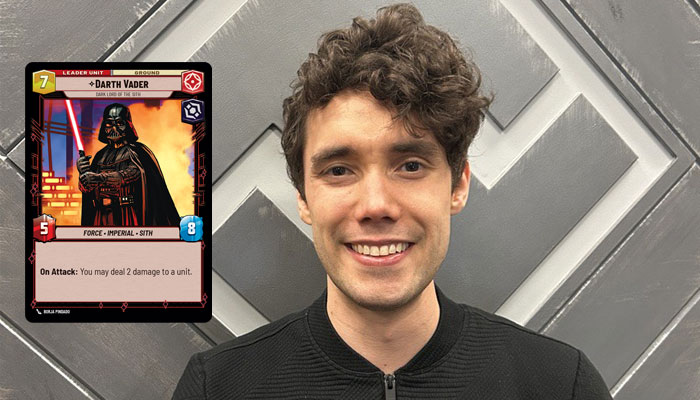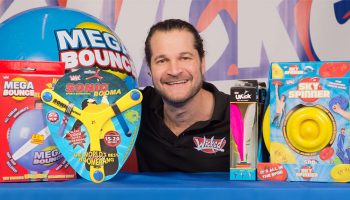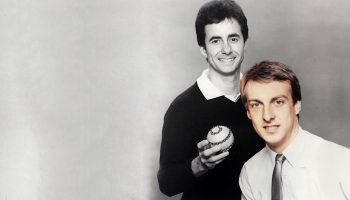Fantasy Flight Games’ Danny Schaefer on taking a ‘feelings-first’ approach to designing Star Wars: Unlimited

“What should a Darth Vader card feel like?”: Danny Schaefer – Lead Game Designer on Star Wars: Unlimited – takes us inside the development of Fantasy Flight Games’ new TCG.
Danny, thanks for making time. Before we dive into all things Star Wars: Unlimited, for anyone new to Fantasy Flight Games, how would sum up the creative culture there?
Everyone here is extremely passionate, both about games and the universes we’re making games for. As you might imagine, the people making Star Wars: Unlimited are really into Star Wars. It’s also a very collaborative atmosphere between the different teams – design, art, graphic design, marketing… There’s a great spirit of everyone rallying together to make the best games possible.
Star Wars: Unlimited is a huge launch for the company. How long have you been hard at work on this?
It’s been a long time coming; it’s the longest I’ve worked on a game before it released. The initial pitch for the game was in the summer of 2020, so it’s been almost four years from conception to launch. It’s kind of wild that the game is finally here.

What did that initial pitch and vision for the game look like?
We’ve worked with Lucasfilm on many different Star Wars games over the years. Internally, there was a desire to do something new with Star Wars; something that had never been done. The core of the pitch was to make a Star Wars trading card game that was easy for kids and families to learn, but still very robust with some deep strategy for long-term trading card game players. We built the idea out from there.
Being both easy to learn and also boasting deep strategy seems like a tricky balance to strike. How did you thread that needle?
It’s a very tricky needle to thread! It took a lot of design and development time to get right. The key was to keep the core experience and rules of the game relatively straightforward and intuitive. You should be able to explain this to someone in five minutes and they’ll get it. The complexity and strategy comes with how players choose to order their cards, which cards they play first and the actions they choose to take. And, with this being a TCG, the complexity also comes with adding more cards to your card pool. You’ll get more cards with more effects that can shape deckbuilding and your strategy.

I wanted to ask you about how you make the gameplay match the theme… How do you ensure the effects of the Darth Vader card, for example, authentically feel like Vader?
It’s really important to us and it’s one of the first things we think about. A lot of our conversations would start: “So, what should a Darth Vader card feel like in the game?” It should feel like it comes in and has a huge effect straight away. It should change the game.
The process differs character to character, but it’s largely about us trying to get to the essence of what a card represents at that moment. Look at Darth Vader, there are many different moments to explore with that character through cards. Maybe Vader wants to come in and deal a bunch of damage right away. Or maybe the card is more about plotting and scheming behind the scenes… It’s about figuring out what moment we’re trying to capture and translate that into game mechanics.
The other thing to note is that we’re covering a huge breadth of characters in this TCG, so we do have designers on the team who are experts in certain areas. Some are experts on The Clone Wars era, others are more into Rebels… We lean on different people and say: “You’re a big fan of Hera Syndulla – what should her card feel like to play?” That approach has worked out really well for us.
I like the idea that someone on the team is the resident Star Wars Holiday Special expert.
Ha! You never know!
Let’s not spoil that expansion reveal! But I like the idea that you have a feeling-led approach to designing these cards. Does that also extend to how you’re capturing iconic Star Wars locations and ships too?
Absolutely. We’ve divided the gameplay into two arenas – the land combat happens on one side, and the space battles happen on the other side. They largely stay separate from each other. My TIE Fighter card is going to attack an X-wing; it won’t attack a Stormtrooper. Figuring out how to balance those two arenas of combat in the game is a huge part of the strategy, but it also speaks to the theme. Having these two fronts of combat is a very thematic way to capture that Star Wars feeling.

And actually, a card that I’m really proud of from the first set is the Millennium Falcon. It comes in and can attack right away – whereas with most cards you have to wait. There’s a mechanic where it can bounce back into your hand every turn so you can replay it again. When it gets played in the game, you often feel like: ‘Wow, the Falcon just saved me when nothing else could.’ It really captures that feeling you get with the ship in the movies. It swoops in, saves the day and swoops away again.
Great example. You mentioned that there’s lots of Star Wars fans on the team. Does being a fan of the brand you’re working on make the design process easier or harder? Can you be too close to a property?
It’s a bit of both really. On the one hand, you need to have some love for what you’re working on to ‘get it’. To know what a card should be, you have to care about what it has to represent. But to your point, there are ways in which loving a brand can make things harder. You can get attached to a card that represents a character that you love, and that means it might be difficult to see its flaws… You might think: ‘Maybe this card shouldn’t be this powerful, even though I love the character it represents.’ It’s good to have a balance of perspectives, but everyone is excited to be making this cool Star Wars game and if we weren’t fans, it wouldn’t work.
Absolutely. Now, the Star Wars universe is vast. How do you assess what to bring into the game?
One of the reasons we wanted this game to be a big TCG was because it’s a style of game where you can come out with sets year after year after year, with hundreds of cards in them. There’s room to explore all those corners of the Star Wars universe. If there’s 250 cards in a set, we can include a handful of deep cuts that won’t be for everyone – but the people that love them will really love them.
It’s one of my favourite things about designing cards for this game. I’m thinking now of all the little cards we’re dropping into future sets that I wish I could talk about. Some of my favourite cards down the road are those deep cuts with narrow appeal! In our big spreadsheet of cards, we actually have a field that Tyler Parrott – a designer who’s probably deepest into the nuances of Star Wars lore – labels ‘deep cuts’. We have a threshold to ensure we only include a handful of deep cuts each time!
Amazing. And it’s great that Lucasfilm embrace that too! What have they been like to collaborate with?
We’ve worked with them for quite a while on lots of games, but for Unlimited in particular it’s been so much fun to work with them on exploring all these different parts of Star Wars. Some of our previous games have had a narrower focus on a specific part of the Star Wars brand, so it’s been really exciting to explore more of that universe. And it’s also cool to put a unique spin on Star Wars through the art, because that’s a little different to what we’ve done before.

This is a long-term project, with plenty more sets planned for the coming years. How do you pace yourself in terms of adding complexity with new sets?
It’s all about long-term planning. The first set launches this week and we’ve already wrapped up development of the second, third and fourth sets. We’re far along the process of designing and playtesting sets five, six, seven and eight. Our plans for the next three years’ worth of sets are set in stone. It’s always about looking ahead and pacing ourselves with regards to what we add and what we hold back. The long-term view is key.
Another part of the plan is to explore different themes with different sets. Set one – Spark of Rebellion – has a lot of focus on rebels and imperials. We haven’t said too much about set two, but the Mandalorian and Moff Gideon are the two starter decks for that set. So that’s a different space to explore.
It also ties into gameplay and mechanics. Set one is about introducing the game and the basics of the rules and the system. Every future set will introduce a new wrinkle to explore mechanically; new abilities that didn’t exist in previous sets.

Exciting. And what helps you have ideas Danny? What fuels your creativity?
I have my best design ideas when I’m not at work! I’ll be riding my bike, think of something and wish I was at my computer to write it down. The other thing is that this is the biggest single design team we’ve ever committed to one game – and having people to bounce ideas off is great. You can get stuck with a mechanic and having a few people to talk to about it helps to get the ball rolling again. Those off-the-cuff discussions can lead to great ideas and there’s been a lot of that with Star Wars Unlimited… More than with any other game I’ve worked on before.

Do you ever have ideas for games that aren’t a fit for Fantasy Flight? And is there a value in flexing those different design muscles?
I have random ideas for very light party games that are very different from what a Fantasy Flight game looks like, somewhat frequently! That’s true of a lot of people at Fantasy Flight. And to Fantasy Flight’s credit, there are actually a lot of cool avenues at the company to have outlets for that. We’ll have game jams or processes when you can some time to work on an idea that might not turn into anything, but allows you to flex those creative muscles.
I think it’s really valuable. You can get too caught up in thinking: ‘We’re just going to design games for the really enfranchised hobby crowd’. It’s cool if everyone can play your game. We can learn plenty of lessons from party games about how to make your games more accessible for everyone. It was on our mind when we designing Star Wars Unlimited. I want to play this game with my parents and friends who maybe aren’t into games. I’m hopeful that, especially with it being Star Wars, people new to TCGs see it, try it and have a really fun experience.
I’m sure they will. Danny, this has been great. Before we wrap up, I wanted to ask: What’s the most underrated game you’ve worked on?
It’s a great question! The thing that people probably don’t associate much with me – although people love this game – is that I spent some time doing design work for Arkham Horror: The Card Game.

Working on that with Maxine Newman was great. It’s probably the third or fourth game that people would associate with me – if at all – but I was really proud of the work I did on those scenarios… And it was very different experience for me to work on a co-op thematic card game, instead of the competitive TCG stuff.
Good answer. Thanks again Danny – and good luck with the launch of Star Wars Unlimited.
–
To stay in the loop with the latest news, interviews and features from the world of toy and game design, sign up to our weekly newsletter here

























